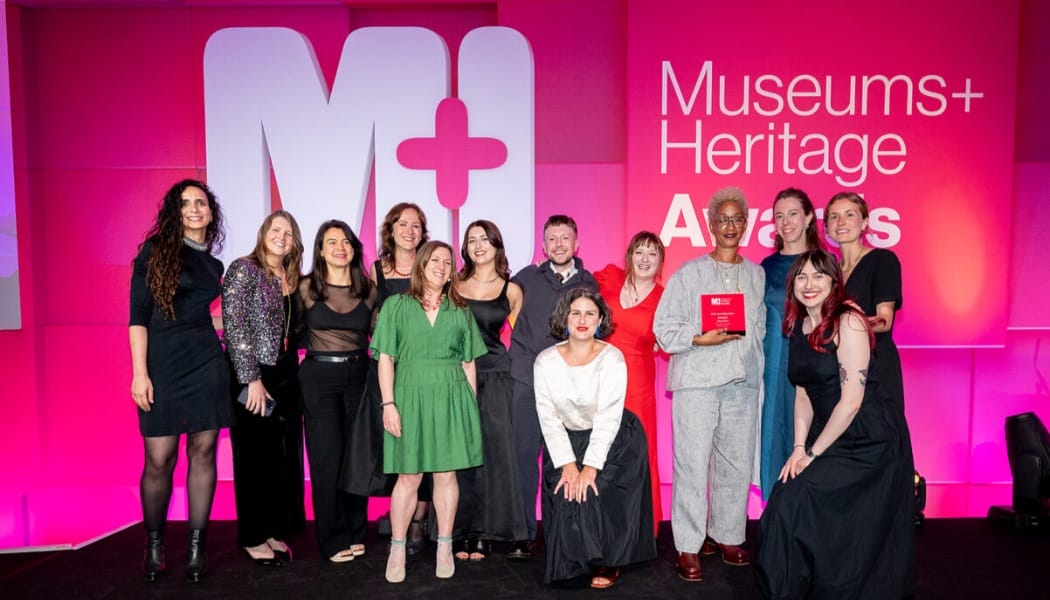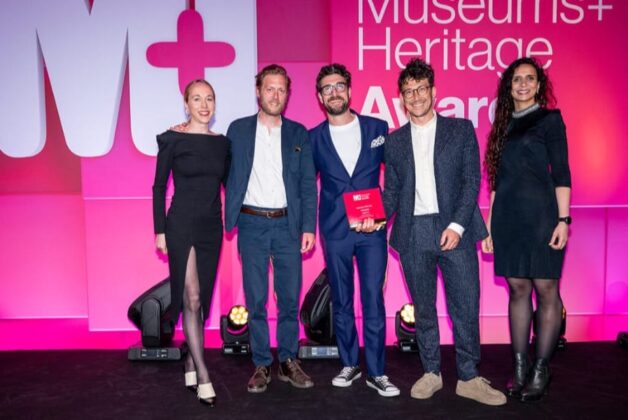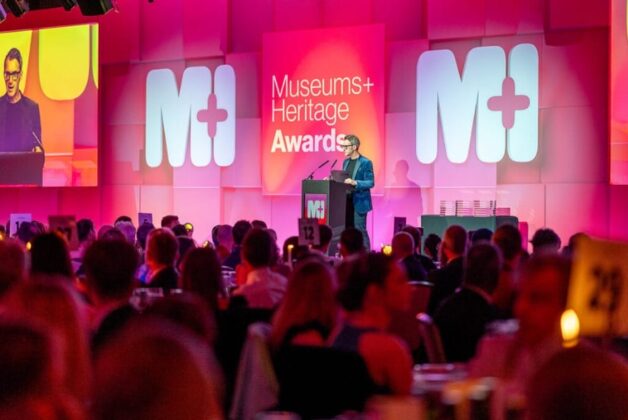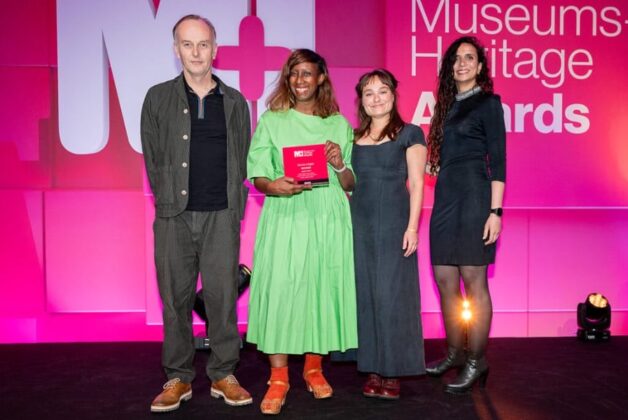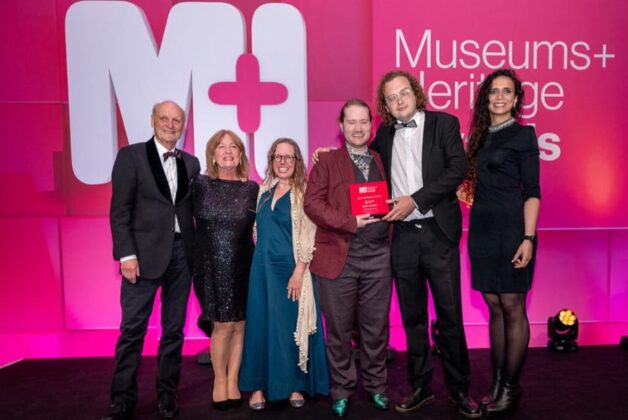Alistair Hardaker
Image: The team at Wellcome Collection accepting the Visitor Accessibility Award at the 2025 Museums + Heritage Awards
Head of access reflects on how inaugural win strengthened staff advocacy and sector accountability five months on.
“Working in access, diversity and inclusion, it can be difficult to focus on the wins because the work is about progress against larger inequities and the incremental changes can be very difficult to notice,” explains Rachel Minott, Wellcome Collection’s Head of Access, Diversity & Inclusion.
Minott is reflecting on the museum’s eventual win at the Museums + Heritage Awards, for which it took home the inaugural Visitor Accessibility Award in May 2025.
Five months on, Minott said of the win, “moments like these are so important, to take stock to record how far we’ve come and the fruits of our labour.”
Competing against institutions including the National Galleries of Scotland, Royal Collection Trust, Royal Albert Memorial Museum & Art Gallery, and Chiltern Open Air Museum, Wellcome Collection’s win recognised long-term, organisation-wide commitment rather than a single project.
For Minott and her team, even the act of applying proved valuable, enabling reflection and self-recognition.” It was a truly uplifting moment to be recognised as the winners because we can see how much amazing work is being done in this field.”
But this wasn’t about resting on laurels. “I was so proud of the whole Wellcome Collection team who really work hard to make our offer as accessible as possible, constantly challenging each other to do more with the opportunity we have to do this work to the best of our abilities.”
For these communities who want to work with us or do work with us, knowing that we have won a Visitor Accessibility Award, gives them a lot of space to hold us accountable when our intentions might fall short of our actions.
Deaf-led programming: access with dignity
Five months on from the award win, Wellcome Collection’s accessibility work has continued to evolve, with a particular focus on deaf visitors.
Efforts have been made to enhance the experience for deaf visitors, including upgrading fire alerts, providing BSL translations, and offering deaf-led programming for exhibitions. This was particularly important for the exhibition “1880 THAT!” which discusses the exclusion of sign language from Deaf education.
“We focused on ensuring our physical space, our digital information and our teams were equipped to welcome our deaf visitors with dignity,” Minott explains. “This included upgrading all our fire alerts to include visual alerts, including BSL translations on web content, ensuring BSL visitor surveys were available, and delivering deaf awareness and BSL foundation training to select teams.”
The urgency was heightened by the exhibition’s subject matter. 1880 THAT! focused on the Second International Congress on Education of the Deaf held in Milan in 1880, where oral education (teaching Deaf people to communicate through lip reading and speech) was declared superior to sign language in deaf schools.
“We knew we would like to see an increase of deaf and disabled visitors, and we needed to ensure that they could access the building in a safe and accessible way,” Minott notes. “And that those who communicated via sign language, who would be experiencing a narrative discussing the roots of their systematic exclusion from mainstream education, would be treated with dignity.”
A responsibility to lead
The judges described Wellcome Collection as “leading lights in disability discourse in museums and pushing the boundaries of what excellent, accessible exhibitions look like”. The judging panel recognised that the organisation “collaborates and shares best practice to help others to achieve the same. ”
“We are very conscious of our privilege in the sector, being a politically and financially independent museum and library,” Minott acknowledges.
“We regularly give tours and talk to teams from national and international organisations with lots of requests for information about how and why we make our access offer.”
While it’s difficult to quantify whether requests have increased since the award, Minott notes a shift in how the organisation understands its expertise.
It is “ reaching out more to others to think about our role in leading accessibility elements in research partnerships; in our events planning and management and visitor engagement and in our digital accessibility work. ”
“The award gives us a strong sense of accountability to doing this work well with those we are currently engaged with.
This accountability cuts both ways. “For these communities who want to work with us or do work with us, knowing that we have won a Visitor Accessibility Award, gives them a lot of space to hold us accountable when our intentions might fall short of our actions.”
Internally, the impact has been equally powerful. “Staff across the organisation feel proud of this work and have become stronger advocates for deepening our approach to accessibility and inclusion. This might include pitching new ideas for tours and talks, requiring our strategies to be more explicit in our commitments and challenging us to explore work in areas like radical safeguarding.”
For Minott as a leader, witnessing this shift is transformative: “This passion being ignited across the organisation is so powerful to see.”
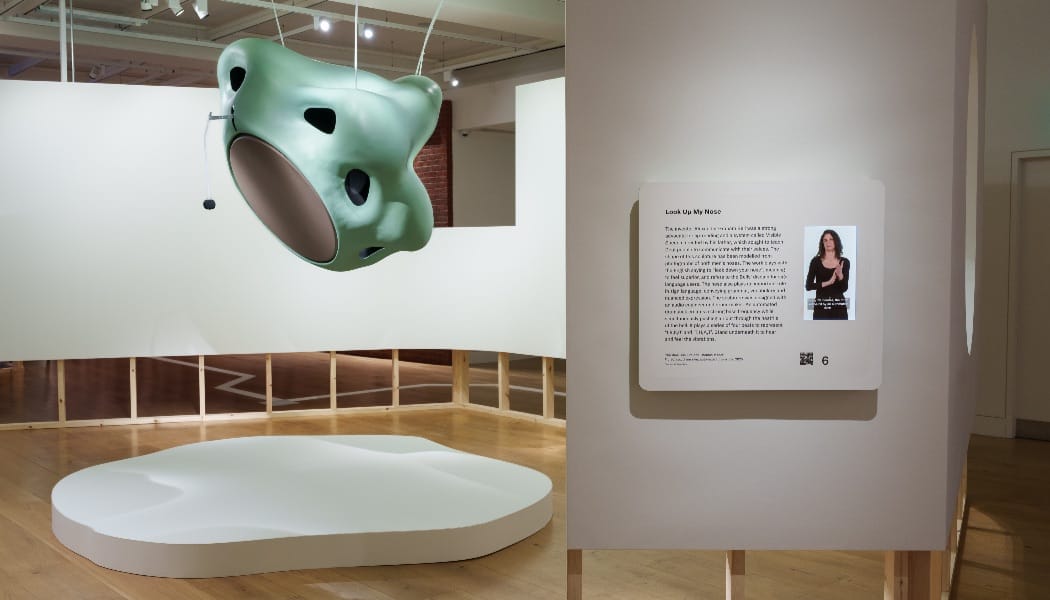
More than ramps and lifts
Asked how winning the award has helped Wellcome Collection advance the conversation beyond ramps and lifts, Minnot said: “It can sometimes feel like our accessibility work is tied to our exhibitions only, but it is the practice across all our teams that really makes this an area of work that we flourish in,” she explains.
“We introduce the understanding around how racism and ableism show up in museum and library practice. And through a series of reflective group learning sessions, each participant emerges with a commitment to embed anti-racist and anti-ableist approaches in their areas of work.”
The results speak to the power of this approach. “Through this process we have been inviting a radical imagination of museum and library practice that will get us towards our vision of a healthier future for everyone.”
Setting the standard
As the inaugural winner, Minott said Wellcome Collection carries unique responsibility, helping to define what the award means.
“I hope this award will be a strong advocacy tool for those who are doing excellent work and want to demonstrate its value,” Minott says.
The timing feels particularly critical. “The world we live in right now does not feel particularly welcoming to access diversity and inclusion practitioners, and many of us fear disinvestment in these practices. Hopefully through awards like these we can demonstrate the value of inclusion and accessibility practices; and support increased investment in this field.”
Minott is careful to acknowledge Wellcome Collection’s privilege while celebrating creativity across the sector. “We understand that we are extremely lucky to be able to invest so much time and resources into accessibility work, and that this is privilege other organisations don’t necessarily have.
“But I would say we are constantly inspired by the creative practice across the sector that push the boundaries of inclusion, and understand that passion, principles and commitment are the key resources needed to be doing this work well.”
For practitioners in the field, Minott hopes the award can serve a deeper purpose than recognition alone. “For practitioners who work in this area I hope this award can make the work feel more sustainable, providing a moment of joy, and recognition that fuels this optimistic practice of equity.”
Entries are now open for the Visitor Accessibility Award 2026.
Building on the foundations
Looking ahead, Wellcome Collection is about to launch its updated approach to Accessibility, Diversity and Inclusion for 2025-2028. “Through it we hope to embed things we are proud of and expand our practice to be more ambitious.”
The focus extends beyond what’s already been achieved. “We are looking at how we actively work with people most affected by health challenges represented in our collections and exploring what this means specifically to each community and project.”
Learning from the deaf-led programming and previous work with visually impaired visitors through In Plain Sight, the museum is expanding its reach. “We are looking forward to developing trauma informed approaches that centres the mental wellbeing of visitor and participants; to challenge ourselves to be more intellectually accessibly especially for our learning-disabled collaborators, who want our library space to feel more accessible and inclusive. “

The work continues
For Wellcome Collection, winning the inaugural Visitor Accessibility Award isn’t an endpoint – it’s a public commitment and a moment of validation in often difficult work.
“Our work has largely progressed as before,” Minott reflects, describing the embedded strategic commitment through Wellcome Collection’s vision of ‘a world where everyone’s experience of health matters’, pursued alongside its equity framework, launched in February 2025.
“Because of the awesome creative energy and agreed commitment to this work we have no shortage of ideas,” Minott notes. “What the updated approach will hopefully offer is guidance in doing this work sustainably.”
Enter the Museums + Heritage Awards 2026
The Museums + Heritage Awards 2026, sponsored by Altair Media, celebrate the very best in the world of museums, galleries and cultural and heritage visitor attractions.

